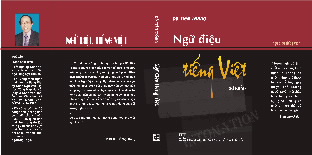Although he is a talented linguist, careful and perfectionist, in the end, Do Tien Thang, a lecturer in the Faculty of Literature, still had to submit to the persistent and long-term encouragement and urging of many colleagues and comrades: EssayVietnamese intonation basicsHis book was born. The problem of Vietnamese speech intonation is in the ideas and wishes of many Vietnamese linguists, but to make the idea become a form, flesh and blood, scientifically convincing, to make a book that "stands" is not a spontaneous story that can be done overnight. The book that his friends expected, which he brought to life, is as beautiful and attractive as his third princess.

Although he is a talented linguist, careful and perfectionist, in the end, Do Tien Thang, a lecturer in the Faculty of Literature, still had to submit to the persistent and long-term encouragement and urging of many colleagues and comrades: EssayVietnamese intonation basicsHis book was born. The problem of Vietnamese speech intonation is in the ideas and wishes of many Vietnamese linguists, but to make the idea become a form, flesh and blood, scientifically convincing, to make a book that "stands" is not a spontaneous story that can be done overnight. The book that his friends expected, which he brought to life, is as beautiful and attractive as his third princess.
After summarizing and properly evaluating the achievements of Vietnamese linguistics on the issue of intonation, the monograph has put forward its own concepts and approaches. The new point of the monograph is to place Vietnamese intonation in the context of a typical tonal language, not starting from the imitation of European languages’ intonation. From there, the author has built a very special type of intonation description diagram. This diagram may be very strange to those who are used to seeing the intonation of non-tonal languages, but it is very simple and easy to understand, even for “outsiders”.

It can be said that the first important contribution of the monograph lies in the Introduction section of the book. In addition to providing a new approach and a specific diagram, the author also presents the true nature of Vietnamese intonation and especially generalizes its five elements: pitch, intensity, duration, rhythm and intonation. Next, the work examines the types of intonation in the system as well as in its function:
In each section as mentioned above, the author has an introduction, clearly presenting related theoretical issues and presenting controversial opinions, if necessary, so that readers can easily visualize the object that the author will describe. With such a survey method, combined with experimental illustrations, the work has provided a comprehensive, colorful picture of intonation as an extremely important element of language.
The next highlight of this first monograph on Vietnamese intonation is the way it is presented. Intonation is a “spiritual” phenomenon, so it is not easy to show it to people, but Do Tien Thang has done it in a spectacular way. The author has “drawn” each stroke, each object in order from simple to complex, from monochrome to polychromatic so that readers can gradually “read” the magic of intonation. It can be said that the book is a rare example of a writing style that attracts attention right from the title, a writing style that “takes the reader as the center”. Therefore, its readership certainly does not stop at those who specialize in linguistics. It is just a pity that the author has not exploited the aspect of rhythm and tempo of sentences in communication, in poetry... If this can be done, “Vietnamese Intonation” will have more readers.
I respectfully introduce this book not only to Vietnamese readers but also to all those who are studying and loving Vietnamese in every country and continent. Congratulations to the author and to the Hanoi National University Publishing House.
Author:i333
Newer news
Older news